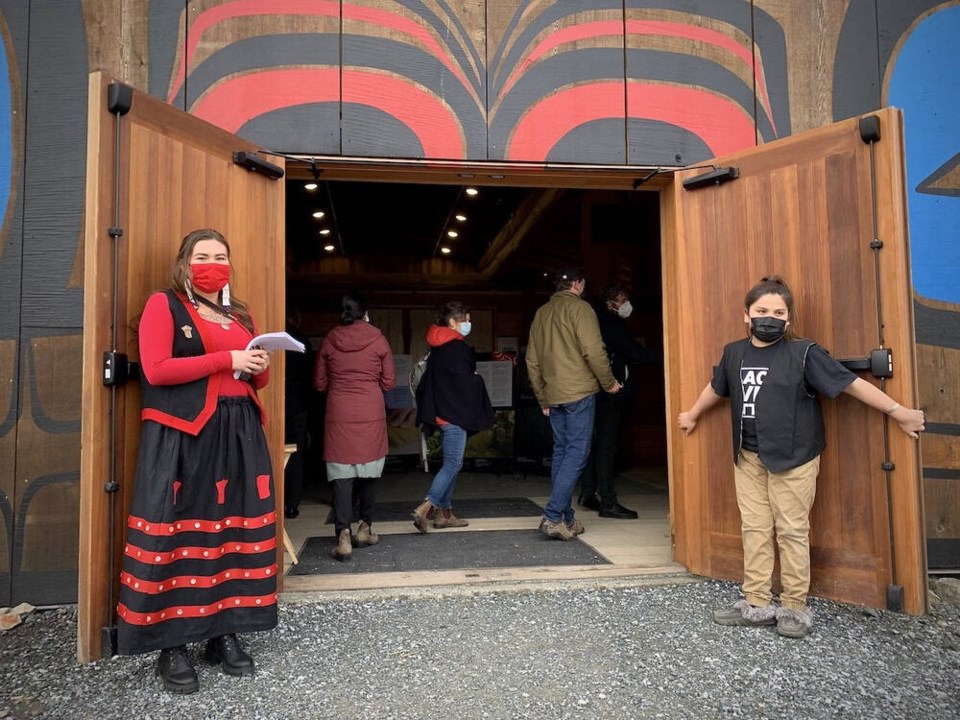As the year’s climate-related gains and catastrophes wrap, sa国际传媒’s National Observer is reviewing the top five stories to make waves in sa国际传媒’s coastal and island communities in 2022.
Fairy Creek flashpoint: ‘I did not want to be involved,’ RCMP officer says
In November, news surfaced of a police officer’s resignation from a controversial task force as a result of concerns over RCMP tactics during a crackdown on the Fairy Creek old-growth blockades.
The officer cited allegations of “unjustifiable” behaviour, including the illegal seizure and destruction of personal property, the mishandling of detainees and improper fraternization with forestry industry employees while the RCMP enforced an injunction at the long-standing protest on Vancouver Island in the summer of 2021.
“Jokes and stories about ‘fucking hippies’ and how much they stink were common,” the RCMP officer said in documents obtained in a freedom-of-information request.
The protection of sa国际传媒’s ancient forests to mitigate the paired climate and biodiversity crises continued to be a flashpoint of protest in 2022, with activists mounting high-profile road blockades and public protests, such as pouring maple syrup on an Emily Carr painting at the Vancouver Art Gallery.
Under increasing pressure, new Premier David Eby promised to protect 30 per cent of sa国际传媒’s lands and waters by 2030 as COP15, the United Nations’ global biodiversity conference, was underway in Montreal earlier this month. But conservationists eagerly await the new year to see if the sa国际传媒 NDP has indeed turned over a new leaf when it comes to the environment.
Sunset of the commercial salmon fishery?
Commercial salmon fish harvesters expressed deep disappointment as Ottawa launched its fisheries licence buyback program to protect diminishing Pacific salmon stocks on the West Coast.
The will pay salmon harvesters to exit the industry and tackle the problem of too many boats chasing too few fish.
But the commercial fish harvesters union says the program will simply beggar fish harvesters, many of whom are desperate after weathering years of the fisheries’ decline.
“It just picks off the most desperate people who need the money and have no other choice,” said James Lawson, president of the United Fishermen and Allied Workers’ Union.
It’s still unclear how the buyback program and the permanent closures of many Pacific salmon fisheries will impact coastal communities — or who will remain on the water with a right to fish in the future.
Indigenous-led conservation surges on sa国际传媒 coast
More than a decade of negotiations bore fruit in September when 17 coastal First Nations and the Canadian and sa国际传媒 governments revealed a blueprint for the sa国际传媒 Northern Shelf MPA Network — a vast network of marine protected areas that will stretch the northern third of sa国际传媒’s West Coast.
The aims to preserve biodiversity hot spots, key habitats, at-risk species and areas of cultural value to First Nations as well as preserving regions for sustainable economic activity, like eco-tourism.
Details are still outstanding, but the massive conservation initiative will cover 100,000 square kilometres of ocean and reflects sa国际传媒 and Ottawa’s vow to increase Indigenous Peoples’ role in conserving and stewarding their traditional territories. A chunk of $800 million in federal funding recently announced for Indigenous-led conservation is being targeted to help protect the oceans surrounding the Great Bear Rainforest on sa国际传媒’s central coast.
And if its protections are tough, the new MPA network will contribute hugely to the provincial and federal pledge to protect 30 per cent of lands and waters by 2030.
But public controversy will swell in 2023 and beyond as the potential cost-benefits become clearer for the massive conservation initiative for coastal communities, fisheries and the ocean environment.
Rural communities plagued by health-care crisis
Like many rural areas, remote coastal communities — particularly in the north Vancouver Island region — are being battered by a significant health-care crisis.
Acute paramedic shortages this summer stranded Quadra Island residents without any local coverage for medical emergencies on numerous occasions. In other instances, volunteer firefighters were drafted to drive an ambulance to ensure a single paramedic could respond.
Since early summer, North Island communities of Port McNeill, Port Hardy and Alert Bay on Cormorant Island have been in an “evolving state of crisis” with repeated and prolonged hospital emergency room closures due to a shortage of nurses, doctors and diagnostic services.
Although the sa国际传媒 government came to a new agreement with doctors, it’s not likely to immediately address the impacts being felt by small communities across the province.
First Nations forward
Indigenous Peoples are leading some of the boldest efforts to tackle climate change and biodiversity loss in sa国际传媒.
This year, Haí色zaqv Nation on sa国际传媒’s central coast developed a to build a sustainable future for generations to come despite being at the nexus of negative impacts from colonialism and climate change.
The plan aims to secure climate outcomes for the Haí色zaqv, but it operates in tandem with the wider objectives, or “house posts”, of self-government, economic development, environmental stewardship, cultural revitalization and housing.
“This clean energy plan is to align with our values and to stay connected with the Earth,” said Q虛átuw虛as Brown of the Haí色zaqv climate action team.



